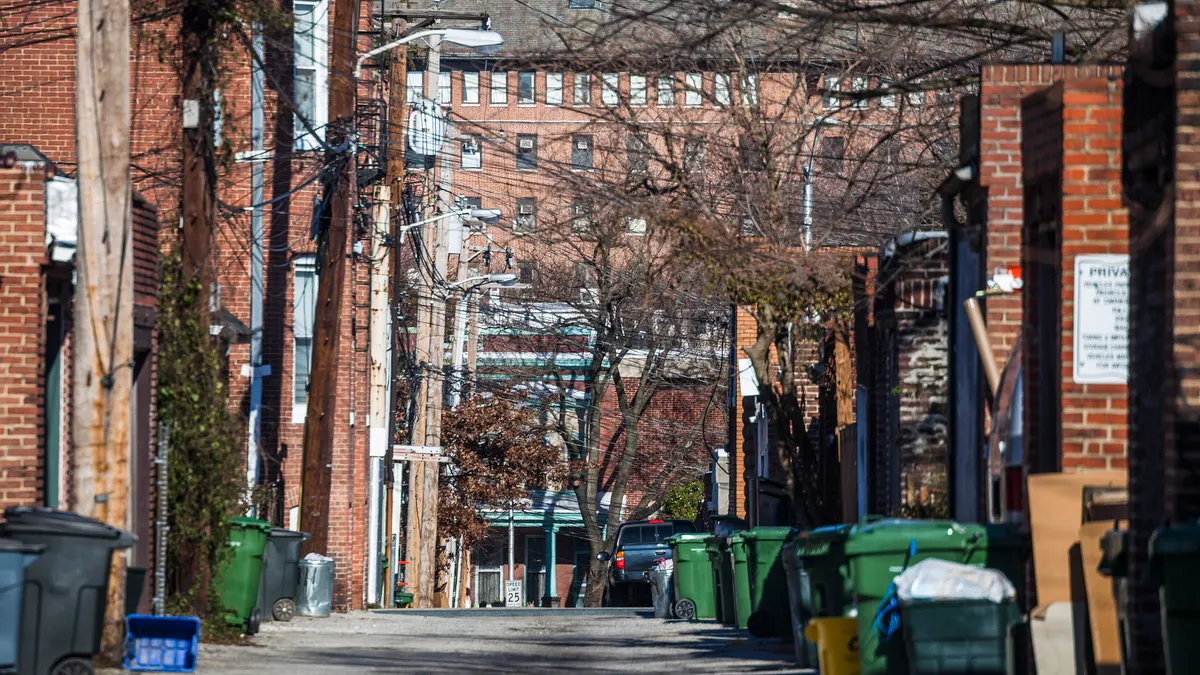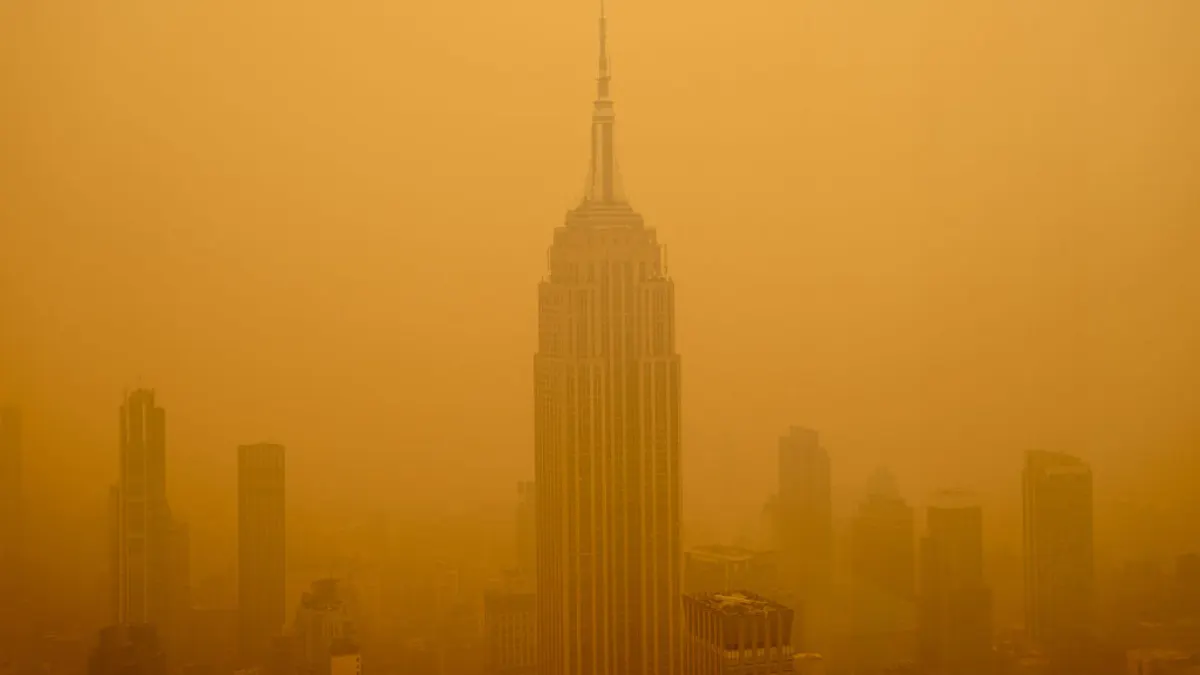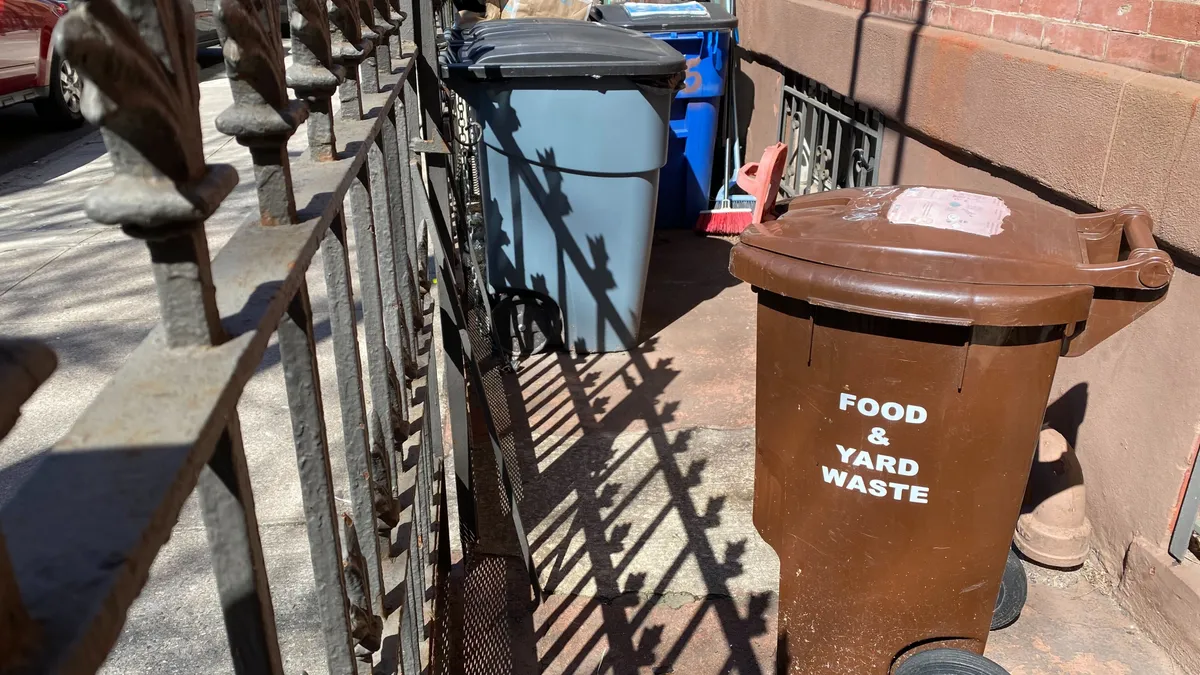The heat illness death of a Baltimore sanitation worker has prompted labor advocates and industry groups to call for better heat protection laws and employer oversight, especially as workers face hotter summers on the job.
Ronald Silver II, a sanitation employee with Baltimore’s Department of Public Works, passed out while on his collection route on Aug. 2 and was taken to the hospital, where he died soon after. Silver’s family, as well as labor unions and worker advocacy groups, say his death was preventable.
A proposed state Heat Illness Prevention Standard could help prevent future tragedies in Maryland, they say. Maryland Occupational Safety and Health is still undergoing the rulemaking process and such regulations may not be in place for another year. Advocates also want a thorough investigation into the Department of Public Works, Silver’s employer. A federal OSHA heat standard is also in the works.
Baltimore Mayor Brandon Scott announced on Friday that the city had hired a law firm to conduct “a thorough review” of DPW’s heat safety policies and practices. It expects to issue a report by the end of September. Baltimore City Council will hold a hearing on the matter today. Meanwhile, Maryland Gov. Wes Moore has also called for a thorough investigation.
Addressing heat illness through regulatory changes
Darryl Alexander, an industrial hygienist and advisor for the National Council for Occupational Safety and Health, said Silver’s death underscores a greater need for employers to take heat illnesses seriously. Though many waste operators take meticulous steps to protect their workers, she said, some employers aren’t prioritizing heat safety measures, either because they aren’t required to by law or are not aware of the specific conditions their employees endure.
“What's really important is that someone can assess — hour to hour and day to day — what the hazards are and what efforts the employer is going to make to reduce exposure to the heat,” she said.
Forthcoming heat illness prevention regulations in Maryland could help, she said. The proposal, which is undergoing a public comment period through Aug. 26, would require employers to create a detailed heat plan based on an assessment of their operations. Employers would also have to provide water and rest breaks more frequently in hotter temperatures and conduct regular training on how to recognize and prevent heat-related illnesses.
If enacted, the regulations would follow other states with similar worker protections, including California, Minnesota, Oregon and Washington. A separate federal OSHA standard, also in the works, would be the first to apply to relevant industries nationwide. OSHA expects to soon open up the proposed standard for public comment.
AFSCME, which represents DPW workers, has also called for better state and federal heat illness protections as a way to hold employers accountable.
At the union’s recent conference in California, delegates passed a resolution supporting policies that extend safety regulations to public sector workers as well as private sector workers, noting that public sector employees “do not have the same protection from workplace hazards as their private sector counterparts unless their state has extended OSHA protections to them.” A federal bill, the Protecting America’s Workers Act, aims to extend those protections.
How heat affects waste workers
Silver’s death came just weeks after Baltimore’s Office of the Inspector General issued a report urging DPW to urgently address numerous safety and health issues at its Cherry Hill yard. Inspectors had visited the facility on three occasions throughout June and July and noted that workers repeatedly lacked access to cold water and did not have air conditioning or fans inside collection vehicles, the break room or the locker room.
One of OIG’s visits was on July 10, when the heat index was expected to reach over 100 degrees Fahrenheit. The Baltimore City Health Department had issued a Code Red Extreme Heat Alert. That day, inspectors noted workers only had access to warm bottles of water and the facility’s sinks ran only hot water. Air conditioners inside a temporary cooling trailer had blown a fuse, according to the report.
“Without adequate and safe working conditions, the City is not only potentially violating OSHA regulations, but DPW workers’ health and safety are currently at risk,” the OIG report said.
The federal Bureau of Labor Statistics consistently lists the waste industry among the deadliest jobs in the U.S. Yet it’s tough to get a more specific picture of how heat may contribute to waste worker fatalities.
BLS does publish data for fatalities due to “exposure to temperature extremes,” but those numbers don't offer details on the conditions workers face or whether such deaths are related to extreme heat or extreme cold. One waste collection worker died in 2011, and another in 2013, due to exposure to extreme temperatures, according to data. Across all industries, 269 workers between 2018 and 2022 died from such exposures.
Heat illnesses can also be hard to track, in part because heat might be a factor in why a worker has called in sick or is feeling unwell on the job. Those details are not noted in official data, said Kristyn Oldendorf, director of public policy for the Solid Waste Association of North America.
“It’s not always easy to identify. Somebody might not report that [heat] is the reason they are working more slowly, or they have to take more breaks. They may not report that it’s affecting them, but over time, it's impacting their health,” she said.
Heat can also play a role in causing other injuries or near misses due to fatigue, discomfort or workers rushing through jobs to get out of the sun, Alexander said. “If somebody is heat stressed, they're more prone to having accidents and injuries using equipment or something else, and it seems that employers sometimes are oblivious to that.”
Regular heat safety training can play an important role in helping workers recognize and respond to signs of heat stress and heat illness, especially in the waste industry where workers are often working independently on collection routes and must self-monitor their environments for heat hazards, Oldendorf said.
The week after Silver’s death, DPW paused collection services for one day so workers could attend a mandatory heat safety training. The move drew mixed reactions from labor and worker groups, which said the training was an important step in improving safety but also showed that DPW hadn’t been proactive about helping employees recognize the serious signs of heat illness, Alexander said.
Keeping workers in the conversation
Unions like the AFL-CIO and AFSCME have called for policies that ensure workers can freely report unsafe conditions and can complete their work without fear that operating more slowly or taking more breaks could jeopardize their jobs.
During a public hearing on Maryland’s proposed heat safety standard on Friday, AFL-CIO representatives suggested that the state regulations should require employers to seek “meaningful input from workers” when developing a heat illness prevention plan for their facilities.
Anastasia Christman, a senior policy analyst for the National Employment Law Project, added during the hearing that Maryland’s state heat standard should include an anti-retaliation provision so workers “know with absolute clarity” that they have a right to file a complaint when working conditions are unsafe.
Employers who simply talk to their workers about their daily conditions will not only help save lives, but will also create a better safety culture overall, Alexander said.
“I know that there's a great deal of demand on employers, on haulers, on everybody to get the job done,” she said. “But workers may know some shortcuts, some tips that would be helpful to keep them safe. Employers sometimes just forget to ask the people who are working for them to help them come up with a good plan.”





















